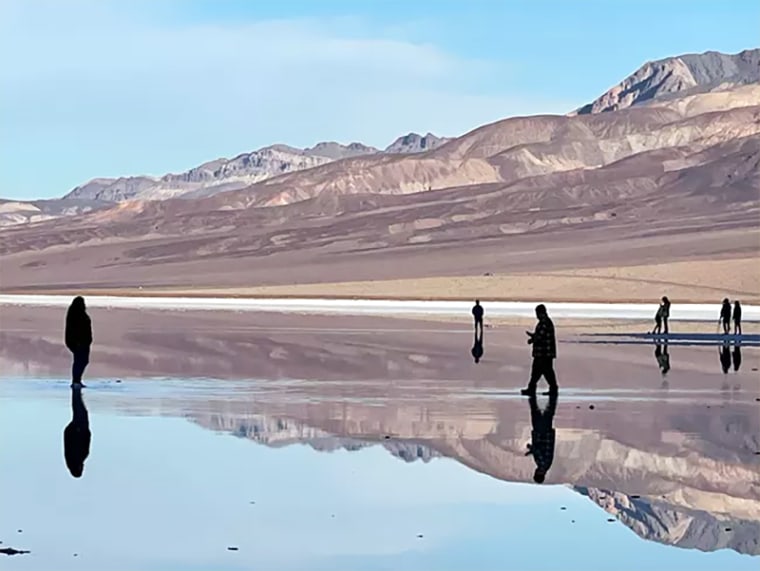Historic rainstorms that lashed California recently have kept a rare phenomenon around — a lake at famed hot spot Death Valley.
The lake formed at Badwater Basin in August, on what normally is a salt flat, after Death Valley National Park saw heavy rains and flash floods caused by the remnants of Hurricane Hilary, park officials said.
The atmospheric river events over the last two weeks brought heavy rain to much of California and will keep the lake around longer than it would otherwise exist, the park said in a statement Thursday.
“Most of us thought the lake would be gone by October,” park ranger Abby Wines said in the statement. “We were shocked to see it still here after almost six months. This week’s rain will extend how long the lake is here. It’s too shallow to kayak in, but it makes amazing reflections of the mountains.”

Death Valley usually only gets around 2 inches of rain per year, but it got just shy of 5 inches over the last six months, almost entirely because of Hilary and the recent atmospheric river event, the park said Thursday.
Around 2.2 inches of rain fell in a single day during Hilary, which hit California as a rare tropical storm. The floods damaged roads and other infrastructure.
But it also left the lake, which at one point was 7 miles long, 4 miles wide and 2 feet deep, the National Park Service said.
Death Valley got 1.66 inches of rain earlier this week, the National Weather Service said early Wednesday in a 72-hour precipitation report.
A temporary lake at Badwater Basin is rare, according to the park service. The basin is itself a former inland lake, called Lake Manly, which has long since dried up. It existed in two past periods, and most recently dried around 10,000 years ago, according to the park.
While Death Valley is known as the location of the hottest temperature ever recorded on Earth, and scorching temperatures during summer even when there’s not a record, highs this week have been around the 50s to 60s. Average highs at Furnace Creek start to reach 90 degrees usually in April, according to the park.
The record for the hottest temperature ever recorded on the planet was at Furnace Creek in Death Valley on July 10, 1913, according to the World Meteorological Organization, at 134 degrees.
